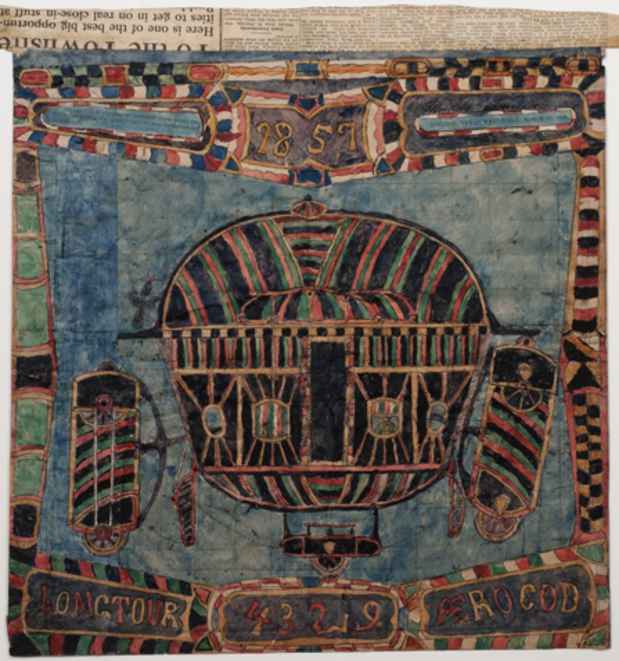"Darker Stars-The Roots of Steampunk Art" Exhibition
Cavin-Morris Gallery

This event has ended.
The whole idea of Steampunk is revisionist..... its process is to look back on certain threads of history and reweave them into the present and future. There are no rules. A literary precedent has been set with Edgar Allan Poe and Jules Verne up through H.P. Lovecraft, Bruce Sterling, and William Giibson, but as that literary history has darkened and brought in more decadent elements it is common now to include J.K. Huysmans and his ilk for their embrace of the phantasmal and of artifice as weapons against mundane life. Though there is a Steampunk or Steamgoth literary lineage the same isn't true of its Art. There have indeed been Contemporary Steampunk art exhibitions but none working back through history. As I mentioned, there are no rules and so, with this exhibition and several to follow, Cavin-Morris Gallery is going to explore alternative revisionism and establish some Old Masters in the historical lineage of what has become known as Steampunk art.
Despite the twin sisters of poverty or depression, it was a hand-me-down from Victorian times to feel that, with the right machine, the right invention, the right harnessing of one of Nature’s energies (usually having to do with electromagnetism or electricity or steam), one could be rich and a world savior to boot. The Inventor was a god. The role models were people like Thomas Edison and Nicholas Tesla. Inventing could push the outer limits of individual opportunity. One could be rich, famous, and in control of one’s destiny. It is this feeling of do it yourself unlimited opportunity that the Steampunk and Steamgoth communities draw upon.
But the mind does not automatically draw within the lines. The fantasy world Jules Verne imagined was shared by others. Charles Dellschau’s Flying Machines were not a literary device. They represented the hopes and dreams of someone who completely believed in their existence. Dellschau becomes the center of this exhibition because of his fixation on airships and flying, he is the epitome of what Steampunk design is all about. But he wasn’t looking backward. He was looking into his present and forward.
Melvin Edward Nelson was another for whom the magazine, Popular Mechanics, was a Bible. For him the machine had a different spin and fed a visionary hunger. He was physically in tune with astral geology and the ability of the human mind to receive cosmic information--the very voices of planets being born, of the healing energy of interplanetary light emanations. He took Dellschau out further from the skyways of earth into the planetary airways. He designed and built machines that would harness universal energy; the mind and body would fuse and see first hand the awesome births and deaths of planets and stars and use this experience for healing, and he would be the inventor who made it possible.
Emery Blagdon grew up with the same belief of the inventor as God. If properly tuned and psychically aimed, a machine could prevent disease or heal the ill. He knew he was intuitive. He could invent and build the machines but he couldn’t necessarily explain how they worked. That was the work for scientists. Meanwhile he could channel energy through the Healing Machines and put them to work on an earth that was suffering. Although his goal was a positive one, it was still infused with poignancy in his recognition of the dark side of Nature and Her legacy of Disease and Death. Electromagnetism could be recycled through the machines to counter these curses.
The Victorian times were also an era of exploration of the occult; of mediums and visionary voyages, of the embrace of mental depression as a route of survival and a sign of creative intensity. In A Rebours, by Joris-Karl Huysmans, the main character, Jean Des Esseintes, builds a mechanical fish to float in a false sea to replace Nature’s more risky version. Some in the Victorian world, in opposition to bourgeois complacency, held a need for individual freedom of expression close to anarchy. Religion was also potentially a path to darker visionary worlds. In Henry Darger’s struggle with the blood, and complete immersion demanded by Catholicism, he used Prussian soldiers and huge explosions as forces that both protected and threatened the world. War became the ultimate world of adulthood, both attractive and terrifying. Darger’s vision is a bridge to the Goth viewpoint in its dance on the edge of cruelty.
If there ever is a revisionist timeline of Steampunk and Steamgoth Art then the names Charles Dellschau, Melvin Edward Nelson, Emery Blagdon, and Henry Darger, certainly should be recorded as some of the natural self-taught progenitors.
This first exhibition examines artists who are self-taught and for whom there is little differentiation between their lives and their artwork. The art itself was really life process. The second show in this series will present works by both trained and untrained artists dealing with the same subject matter.
Also shown will be Zbynek Semerak, Leos Wertheimer, and Sandra Sheehy.
Media
Schedule
from January 26, 2012 to March 31, 2012
Opening Reception on 2012-01-26 from 17:00 to 19:00